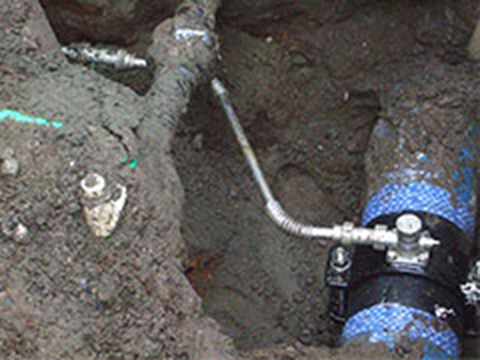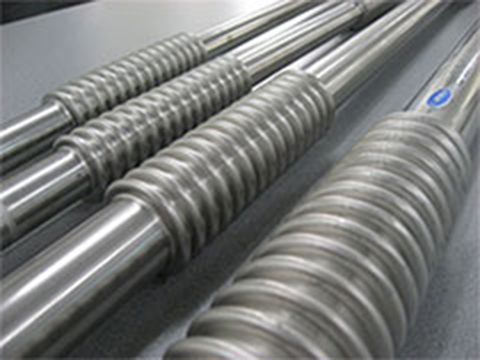Corrugated Stainless Steel Tube
Showarasen
Pipe-to-pipe connection points are the most common source of water leaks along service pipelines.
CSST offers a hybrid of straight and corrugated stainless steel piping that is ideal for service pipelines. Each 4-meter section of pipe features 8 corrugated sections, created via a hydroforming process that utilizes specialized molds. The result is a pipe that can be bent by hand, and most importantly, reduces the number of joints involved in the final assembly.
Absence of joints makes for high resistance to earthquakes,settlement, and vibrations
Replacing connection points (highly prone to leaks) with corrugated piping dramatically reduces water leakage. But furthermore, they enhance underground installations’ absorbance of vibrations from exterior sources such as heavily-trafficked roads.
Durability provided by material properties
CSST is made of SUS316, an anti-corrosive and durable material suitable for long-term installations. Stainless steel in general is resistant to shock, and SUS316 is effective in all kinds of applications from underground to exposed piping.
Reduced construction times and costs due to simplified assembly
CSST can be bent up to 90 degrees by hand in order to accommodate pipeline connections. Ease of use, robustness, and damage-resistance make CSST a viable solution for all levels of workers and environments.
*Connection points between pipelines are recommended to be assembled using joints made of the same stainless steel material.
Improved lifecycle costs
The durability of CSST makes for a product that can radically reduce lifecycle costs for a given pipeline.
In addition, an extended lifetime can minimize the maintenance costs that are associated with leakage accumulated over operational hours.
Finally, CSST can curb extensive maintenance thanks to its shortened installation time and limited part count.
| Item | Testing Protocol |
| Pressure Resistance | Water pressure of 2.5 Mpa is maintained for 2 minutes, or air pressure of 0.6 Mpa is maintained for 5 seconds. |
| Leachability | Leachability tests and qualifications are done as per the procedures outlined in the Ordinance of the Ministry of Welfare No.14. |
| Bending Repetition Tests | Tests are done at 20 repetitions for 13-30 SU, and 10 repetitions for 40-50 SU. |
| Flatness | The subject is placed lengthwise between two flat boards, and is compressed to 2/3 of its maximum tube diameter. |
| Hardness | A micro Vickers hardness tester is used to measure axial cross section. |
| Thickness Reduction Rate | A point micrometer is used to measure cross-sectional thicknesses at the crests and troughs of a given corrugated section. The measurements are subsequently compared. |
| Extension and Residual Extension | The subject is sealed at one end, and filled with water. Internal pressure is increased to 1.0 Mpa within 1 minute, at which point this pressure is maintained, and the resulting tube extension is measured. Next, this procedure is repeated at a pressure of below 25 kPa, and the residual extension is measured. Lastly, the same procedure is again performed after increasing the pressure to 2.5 Mpa within 1 minute. |






